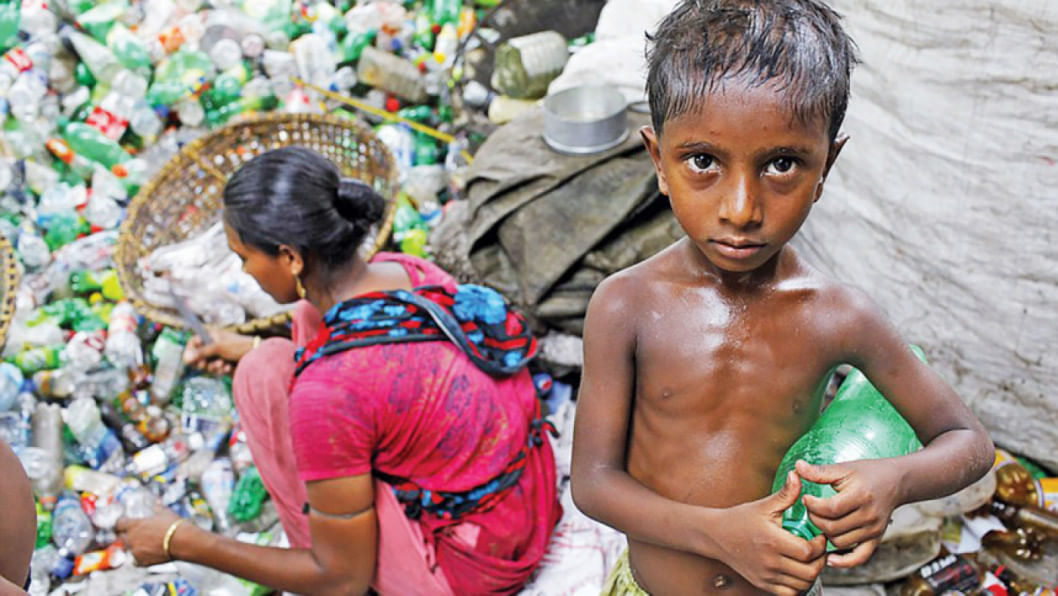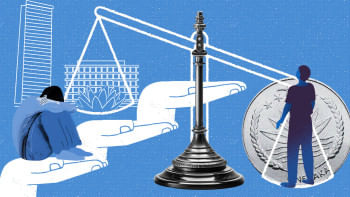Are we doing enough for the urban poor?

- Poverty rate surges to 28 percent nationwide
- Extreme poverty climbs above 9 percent mark
- Urban poverty jumps to nearly 20 percent
- Only 4 percent safety nets target urban poor
- Inflation, high rents deepen urban hardship crisis
Bangladesh has long been celebrated for its success in reducing poverty. Over the past two decades, the national poverty rate has declined steadily, with rural-focused interventions lifting millions out of deprivation. But the picture looks different in recent months.
A recent survey by the Power and Participation Research Centre (PPRC) paints a grim picture. Nearly 28 percent of Bangladesh's population now lives below the poverty line, up from 18.7 percent just two years ago.
Extreme poverty has risen from 5.6 percent to more than 9 percent. This means more than one in four people are poor, while one in ten live in extreme poverty.
For urban areas, the situation is worsening. The poverty rate there jumped from 14.7 percent in 2022 to nearly 20 percent in 2025, according to the Bangladesh Bureau of Statistics and PPRC estimates.
Today, the urban poor — including housemaids, day labourers, pavement dwellers, women escaping abuse, rickshaw-pullers, garment workers, and countless families in fragile settlements — are falling through the cracks of development.
Their struggles expose a troubling blind spot in the country's poverty reduction journey, one that is becoming increasingly difficult to ignore.
Behind these figures lies a harder truth: the urban poor are among the worst affected, yet the least supported by government social protection programmes.
Despite rapid urbanisation, urban households receive only about 20 percent of social protection benefits, according to the Research and Policy Integration for Development (RAPID).
Only 4 percent of safety net schemes are specifically designed for the urban poor. Nearly half of extremely poor households receive no social protection at all.
In urban areas, the exclusion rate rises to nearly 64 percent, far higher than the national average.
By contrast, rural programmes dominate allocations, reflecting a structural bias rooted in a time when poverty was viewed almost exclusively as a rural problem.
Even the overall allocation is far below needs. In the current fiscal year, the interim government set aside Tk 136,026 crore for social safety net programmes, or 17.07 percent of the national budget.
Yet, as the Centre for Policy Dialogue (CPD) points out, once pensions, savings certificate interest, and agricultural subsidies are excluded, the effective allocation in FY26 falls to 8.2 percent of the budget and just 1.03 percent of GDP.
Since pensions and farm subsidies make up 45 percent of social protection spending, allocations for all other programmes remain limited.
Urban poverty is harsher than its rural counterpart. Families grapple with high rents, unstable informal jobs, rising food prices, and health shocks that quickly drive them into debt.
PPRC data show that more than half of poor urban households have at least one chronically ill member, while nearly one in four is headed by a woman, heightening vulnerability.
Children are among the worst sufferers, with malnutrition emerging as a silent crisis.
From 2000 to 2022, poverty rates in both rural and urban areas declined. But the pace of reduction was faster in villages, partly because poor rural families migrated to cities.
Eminent economist Michael Lipton argued in his seminal 1978 book "Why Poor People Stay Poor" that bias towards urban areas in resource allocation hinders poverty reduction.
While his thesis was debated, the central idea, highlighted in "Bangladesher Arthonoitik Unnayer Gotidhara", remains relevant.
Yet, in Bangladesh, the reverse bias is evident: rural poverty programmes dominate, while urban ones remain piecemeal.
Many schemes focus only on large slum settlements on government land, overlooking smaller, more precarious, and marginalised groups such as pavement dwellers, migrants in bachelor messes, and evicted families.
These communities are often excluded because they are considered too mobile, fragmented, or difficult to reach, yet they are the ones most in need.
The consequences are clear. Rural poverty continues to decline faster, while urban poverty persists and, in some cases, worsens. This is compounded by high inflation.
Recently, the Trading Corporation of Bangladesh (TCB) has halted truck sales of subsidised goods on September 13 after just a month due to budget constraints.
Yet urban inflation has hovered near 10 percent for almost three years. In November 2024, urban food inflation stood at 14.63 percent.
Poor households are now spending nearly 55 percent of their income just to buy food.
Unless urgent measures are taken, Bangladesh's poverty narrative risks unravelling.
The question, "Are we doing enough for the urban poor?" has a clear answer: not yet.
The government must first build a proper database of urban poor households. Policies must go beyond slum dwellers to cover diverse groups, including migrants, female-headed families, and the chronically ill.
City-specific strategies are essential, targeting insecure housing, unstable jobs, and high living costs.
Beyond cash transfers, integrated solutions — affordable housing, healthcare, sanitation, jobs, and eviction protection — must be prioritised.
Partnerships between government, NGOs, and communities are crucial if Bangladesh is to prevent its cities from becoming epicentres of exclusion.

 For all latest news, follow The Daily Star's Google News channel.
For all latest news, follow The Daily Star's Google News channel. 








Comments